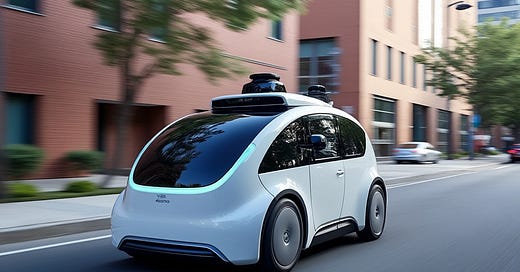Welcome to Cautious Optimism, a newsletter on tech, business, and power.
📈 Trending Up: Trying to buy votes … Finnish GPU clouds … photonics … bullshit … the datacenter world (FT) … IBM AI … Waymo’s paid-rides pace … Honeywell-Google …
The Indian IPO market: TechCrunch reports that Groww is paying around $160 million to return its “domicile” to India from the United States. Why? TC writes that “nearly a dozen Indian startups” have to bring their headquarters back to India to “better comply with Indian laws and facilitate IPOs in the country.”
📉 Trending Down: Stock market returns? … taking a break … press freedom in Italy … non-agentic AI? … SaaS multiples for slower-growing cloud companies …
What to make of Pony AI’s self-driving IPO
How much would you pay for a company with self-driving permits for all four of China’s Tier-1 cities, 440 robotaxis and robotrucks, 220,000 customer sign-ups and a 70% return use rate? Pony.AI is about to find out.
The company intends to list on the Nasdaq, bringing another VIE-heavy offering to American shores. We could get bogged down in the nuances of Pony’s corporate structure, risks associated with listing abroad as a China-based company, and the like. But what you want to now is how good a business is operating a robotaxi fleet today? So let’s answer that.
How Pony.AI makes money
Three main ways: Robotaxi revenue, robotruck revenue, and “licensing and applications.”
Robotaxi revenue mostly comes from “providing a comprehensive suite of AV engineering solutions, including AV software deployment and maintenance, vehicle integration and engineering and road testing, to leading OEMs,” while a smaller portion is derived from “charging passengers fare for their rides with our robotaxis.”
Robotruck revenue, in contrast, comes “mainly by using our robotruck fleets to provide paid transportation services to logistics platforms.”
Licensing revenue, I presume, is self-explanatory. Here’s how the three buckets have added up in recent years, and the first half of 2024:



